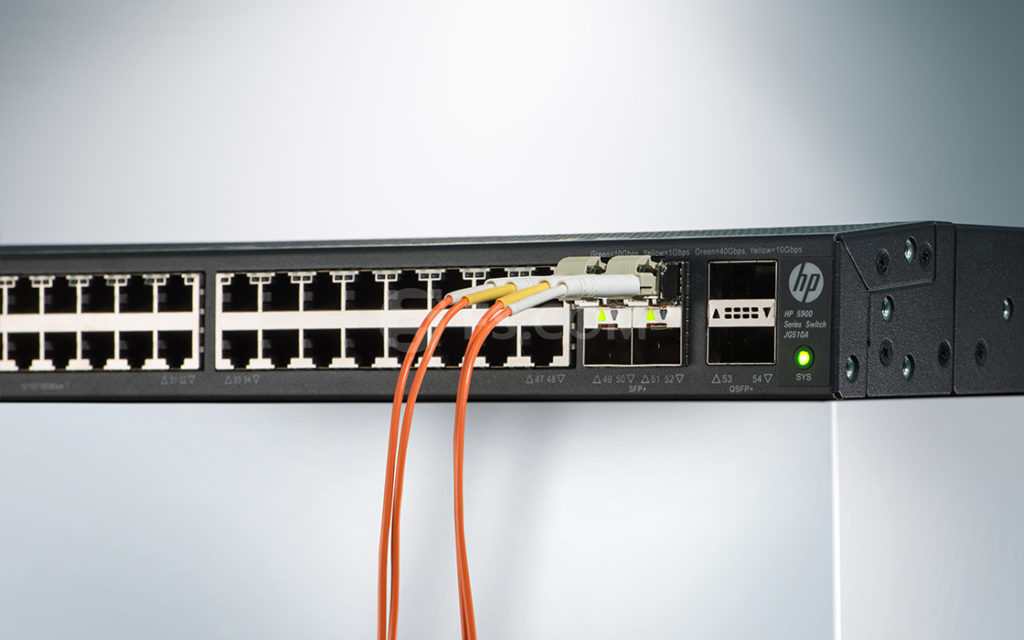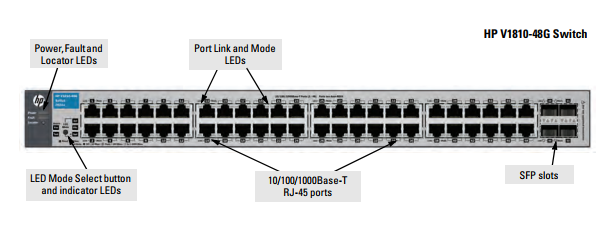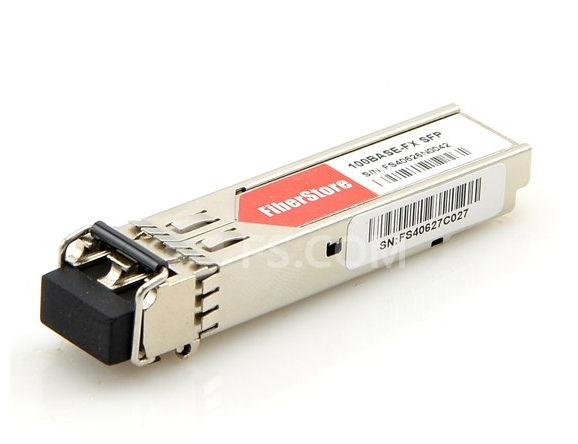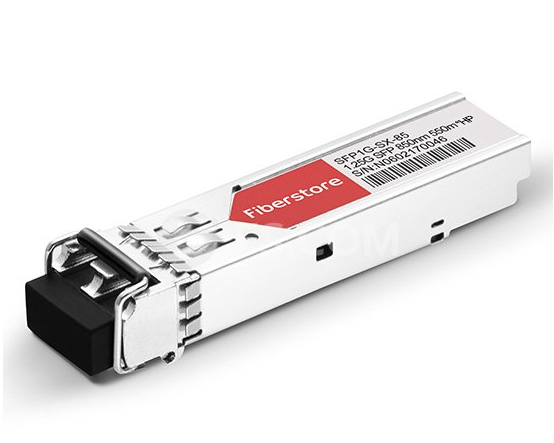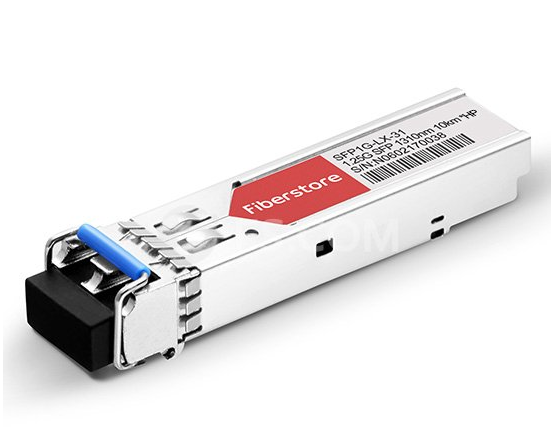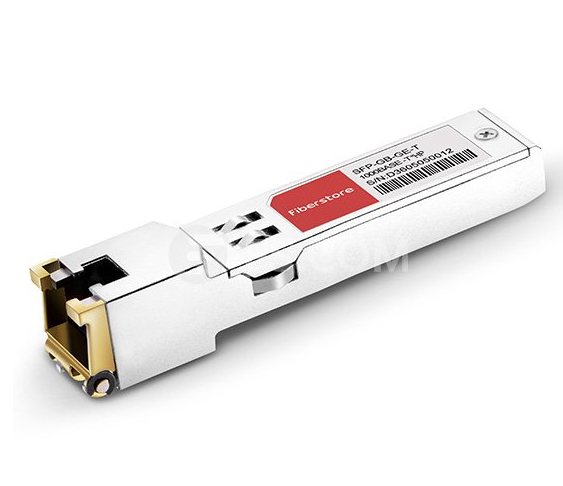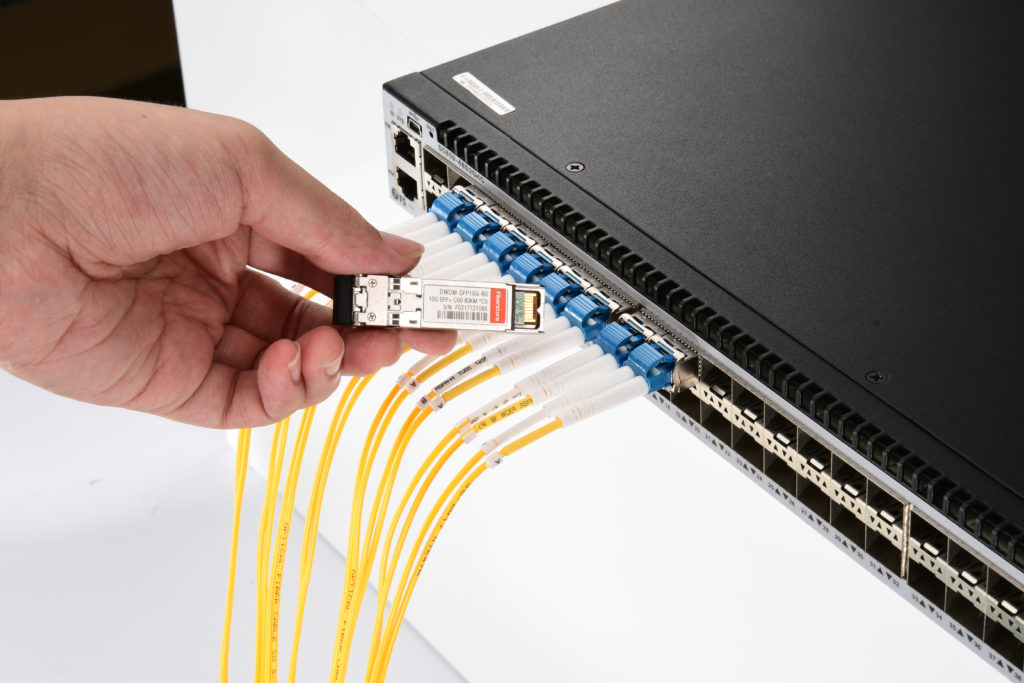SFP, RJ45, and GBIC transceiver modules are three main kinds of 1GbE transceiver modules on the market. You may be puzzled by so many choices of transceiver modules. Don’t worry about it. This article will help you clarify the differences among SFP vs RJ45 vs GBIC transceivers and give you some suggestions about how to choose from them.
What Is an SFP Transceiver?
Short for small form-factor pluggable, an SFP module is a kind of fiber optic transceiver module with LC duplex interface. It supports the transmission data rate of 1GbE. SFP optical transceivers can operate on single mode or multimode fiber patch cables. The transmission distance of SFP modules ranges from 550m to 150km.
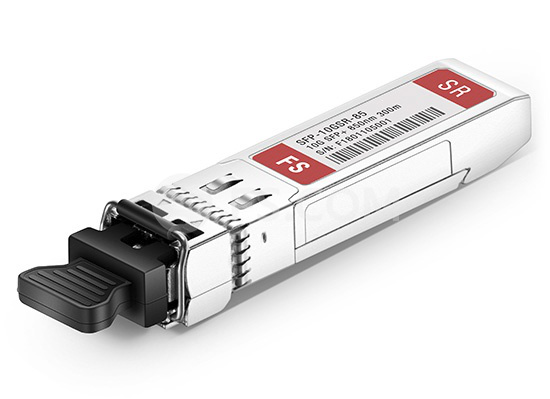
Figure1: SFP transceiver module
What Is an RJ45 Transceiver?
SFP copper RJ45 transceiver is a kind of transceiver with copper RJ45 interface. SFP copper RJ45 transceiver modules can support the transmission data rate of 1GbE. They are often used with Cat5 cables. SFP copper RJ45 transceivers are popular to be used for short distance transmission, because the overall cost of the copper network is lower compared with the optical network.
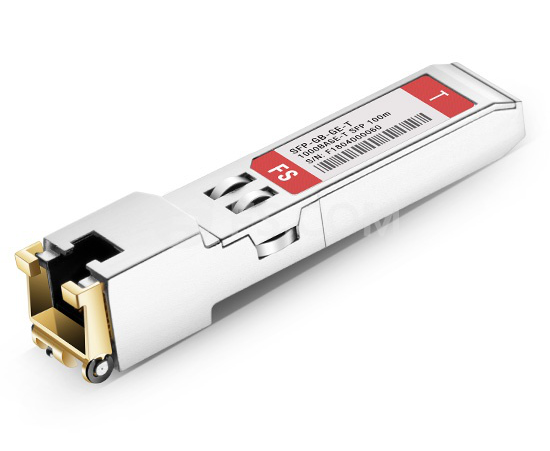
Figure2: SFP copper RJ45 transceiver module
What Is a GBIC Transceiver?
Gigabit interface converter (GBIC), is a kind of hot pluggable fiber optic transceiver module. With the data rate of 1GbE, GBIC transceiver modules can transmit data through the distance of 550m to 80km. A GBIC module supports the same data rate with an SFP module, but a GBIC transceiver module has twice the size of an SFP transceiver module.
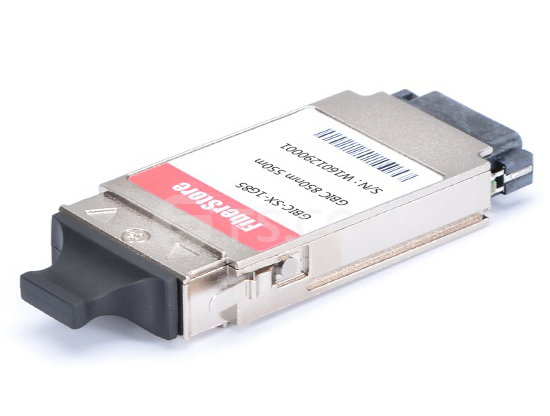
Figure3: GBIC transceiver module
SFP vs RJ45 vs GBIC: What’s the Difference?
After getting a general idea about what are SFP, RJ45, and GBIC transceivers, we will talk about the differences among them. The following chart shows the differences among SFP vs RJ45 vs GBIC transceiver modules from 4 aspects.
|
Transceiver module
|
SFP
|
SFP copper RJ45
|
GBIC
|
|
Interface
|
LC duplex
|
RJ45
|
SC duplex
|
|
Transmission distance
|
550m~150km
|
100m
|
550m~80km
|
|
Cable type
|
SMF/MMF
|
Cat 5
|
SMF/MMF
|
|
Data rate
|
1000Mbps
|
1000Mbps
|
1000Mbps
|
SFP vs RJ45 vs GBIC: When to Choose Which?
As is shown in the chart, SFP, SFP copper RJ45, and GBIC transceiver modules are all used in 1Gbit data transmission. Then when to choose which for the 1GbE network?
Compared with GBIC transceiver modules, SFP modules have a smaller size. So SFP modules allow having more interfaces on a line card or a switch. Besides, SFP transceivers can support the transmission distance much longer than SFP copper RJ45 transceivers and GBIC transceivers. So if you require long transmission distance, SFP transceivers can meet your need. Last but not least, If you already have a line card or a switch with empty SFP slots, then you need to adapt to that.
When your budget is not enough to use SFP transceivers, you can choose SFP copper RJ45 transceivers for short-distance transmission. If you have the requirement of long-distance transmission afterward, you can use SFP to RJ45 slot media converters. For they can provide an economical path to extend the distance of an existing network with fiber cabling.
If you already have a line card or a switch with unoccupied GBIC slots, then you need to choose GBIC transceivers to make full use of the empty slots on your switch. In fact, GBIC transceiver modules are gradually replaced by SFP modules on the market. For SFP transceivers are regarded as the upgraded version of GBIC modules.
Summary
The differences among SFP vs RJ45 vs GBIC transceiver modules include the interface type, transmission distance, and cable type. Your choice among them depends on different situations. If you want to buy Cisco SFP modules or other transceiver modules with high quality and low cost, please contact us at sales@fs.com.

